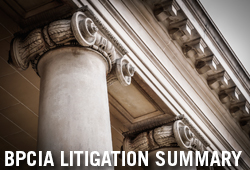As we previously reported, Janssen and Samsung Bioepis jointly filed a stipulation of voluntary dismissal requesting that the District of New Jersey dismiss with prejudice Janssen’s patent infringement claims against Samsung Bioepis based on Samsung Bioepis’s filing of its aBLA for Renflexis® (infliximab-abda). Samsung Bioepis launched Renflexis®, a biosimilar of Remicade®, in…








